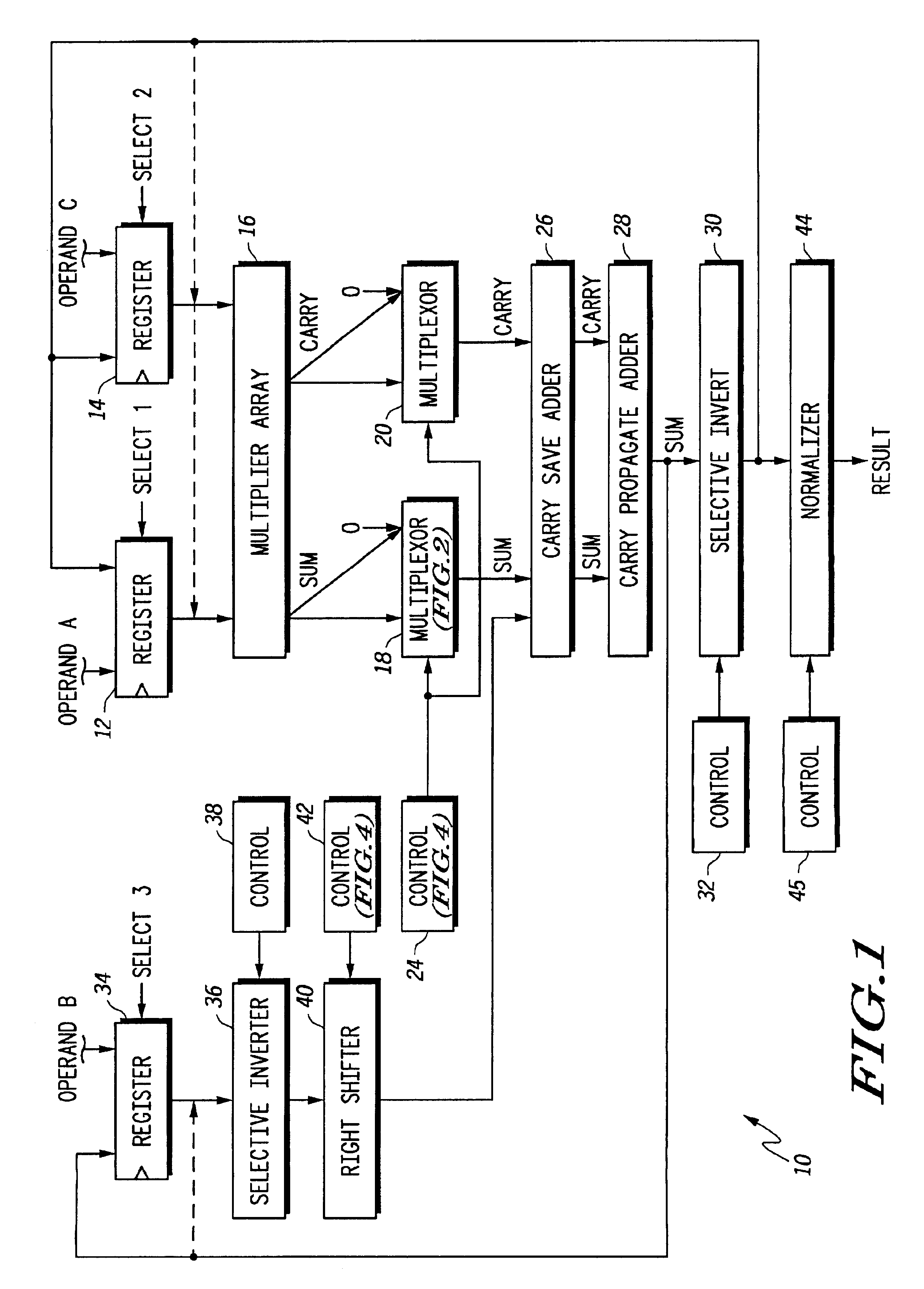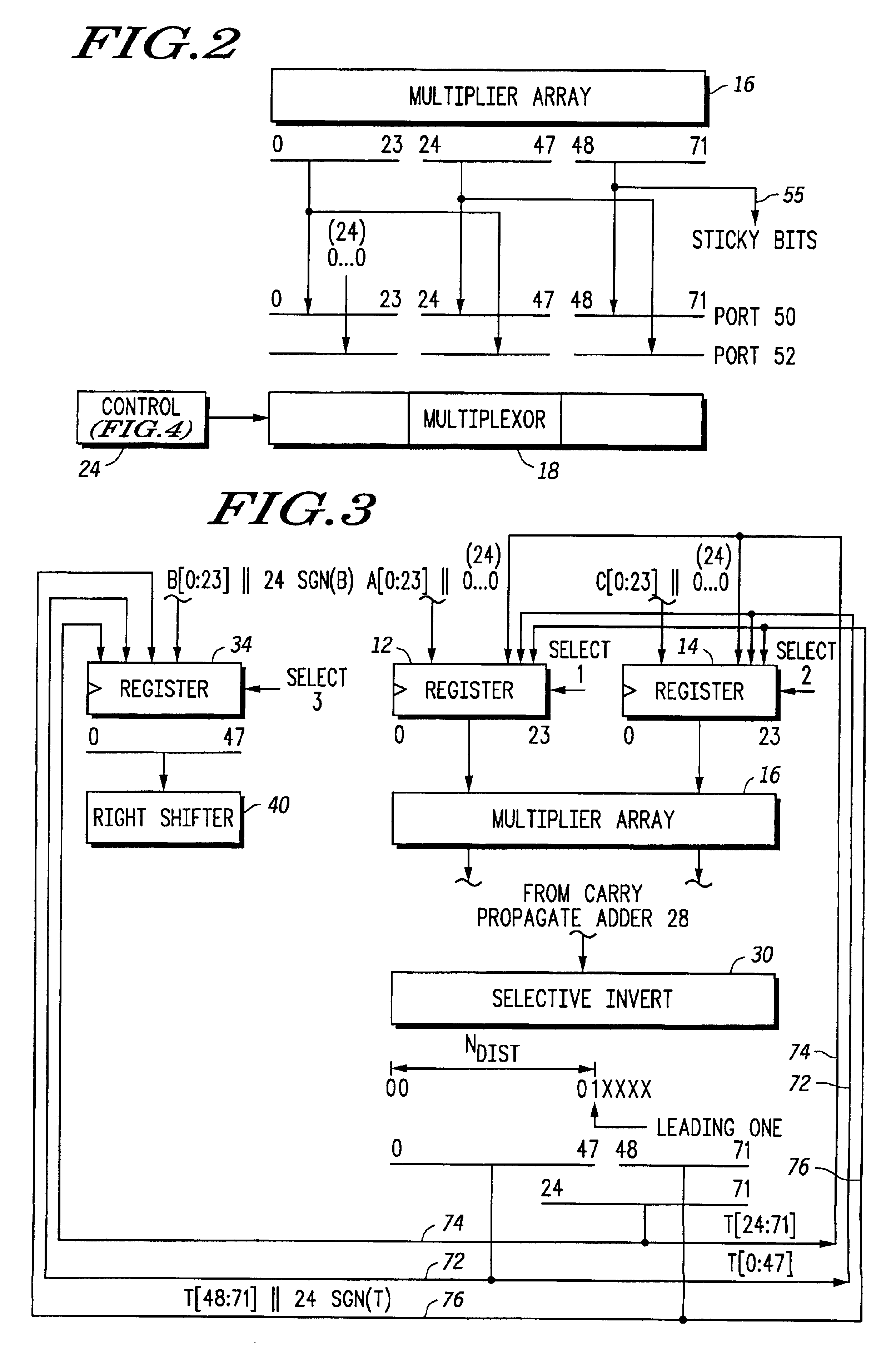Floating point multiplier/accumulator with reduced latency and method thereof
a multiplier/accumulator and floating point technology, applied in the field of data processing systems, can solve the problems of increasing the number of clock cycles to implement the function, and the technique does not work for a fused multiply/add operation,
- Summary
- Abstract
- Description
- Claims
- Application Information
AI Technical Summary
Problems solved by technology
Method used
Image
Examples
Embodiment Construction
[0016]Illustrated in FIG. 1 is a block diagram of a multiplier and accumulator 10 having significantly reduced latency. In the illustrated form, multiplier and accumulator 10 processes a first operand, a second operand and a third operand by multiplying input operands A and C and adding an input operand B to the resulting product. A register 12 has a first input for receiving input operand A, and a register 14 has a first input for receiving an input operand C. Register 12 has a control input for receiving a control signal labeled ‘Select 1’, and register 14 has a control input for receiving a control signal labeled ‘Select 2’. An output of register 12 is connected to a first input of a multiplier array 16. An output of register 14 is connected to a second input of multiplier array 16. A sum output of multiplier array 16 is connected to a first port of a multiplexor 18. A portion of a second port of multiplexor 18 is connected to a binary zero value and a portion of the sum output o...
PUM
 Login to View More
Login to View More Abstract
Description
Claims
Application Information
 Login to View More
Login to View More - R&D
- Intellectual Property
- Life Sciences
- Materials
- Tech Scout
- Unparalleled Data Quality
- Higher Quality Content
- 60% Fewer Hallucinations
Browse by: Latest US Patents, China's latest patents, Technical Efficacy Thesaurus, Application Domain, Technology Topic, Popular Technical Reports.
© 2025 PatSnap. All rights reserved.Legal|Privacy policy|Modern Slavery Act Transparency Statement|Sitemap|About US| Contact US: help@patsnap.com



